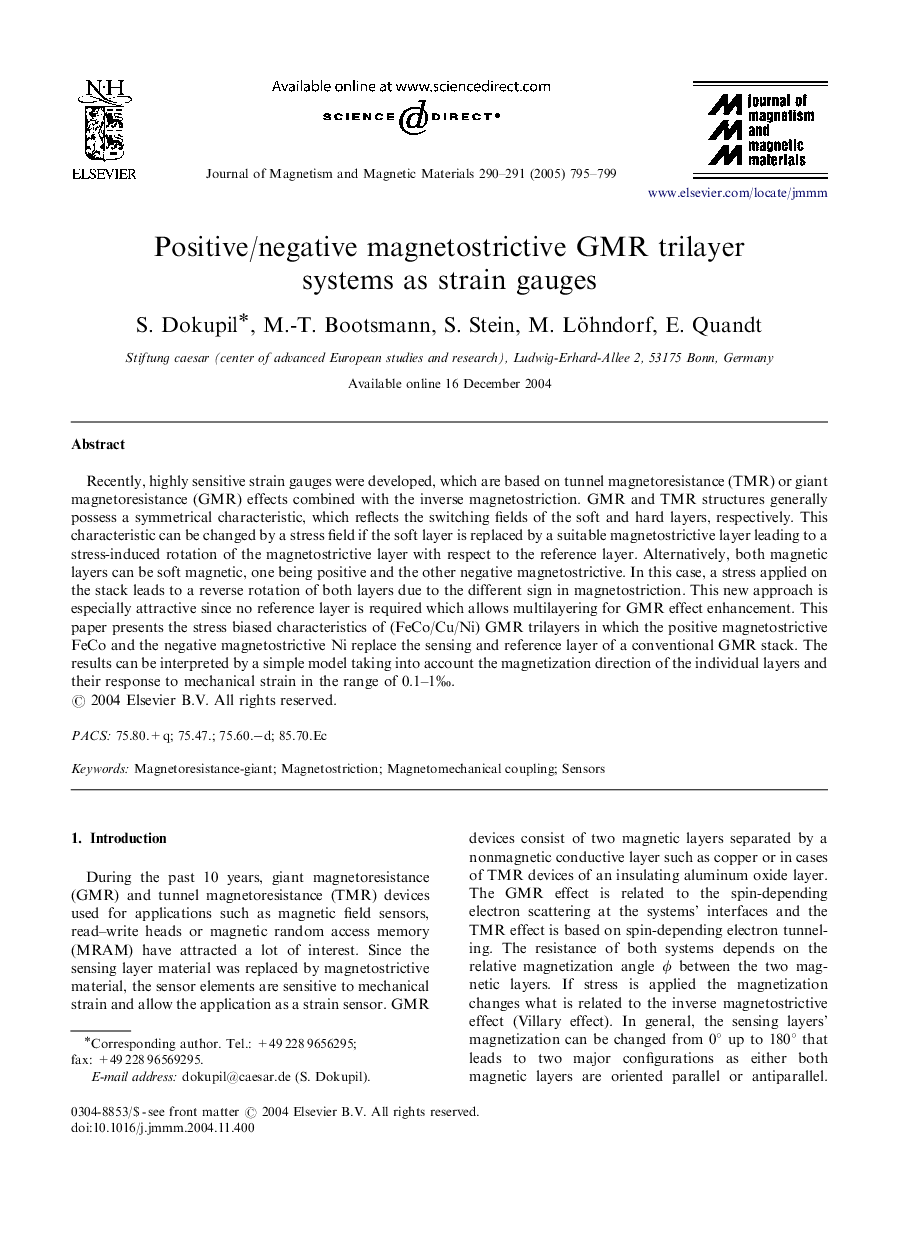| Article ID | Journal | Published Year | Pages | File Type |
|---|---|---|---|---|
| 9834127 | Journal of Magnetism and Magnetic Materials | 2005 | 5 Pages |
Abstract
Recently, highly sensitive strain gauges were developed, which are based on tunnel magnetoresistance (TMR) or giant magnetoresistance (GMR) effects combined with the inverse magnetostriction. GMR and TMR structures generally possess a symmetrical characteristic, which reflects the switching fields of the soft and hard layers, respectively. This characteristic can be changed by a stress field if the soft layer is replaced by a suitable magnetostrictive layer leading to a stress-induced rotation of the magnetostrictive layer with respect to the reference layer. Alternatively, both magnetic layers can be soft magnetic, one being positive and the other negative magnetostrictive. In this case, a stress applied on the stack leads to a reverse rotation of both layers due to the different sign in magnetostriction. This new approach is especially attractive since no reference layer is required which allows multilayering for GMR effect enhancement. This paper presents the stress biased characteristics of (FeCo/Cu/Ni) GMR trilayers in which the positive magnetostrictive FeCo and the negative magnetostrictive Ni replace the sensing and reference layer of a conventional GMR stack. The results can be interpreted by a simple model taking into account the magnetization direction of the individual layers and their response to mechanical strain in the range of 0.1-1â°.
Related Topics
Physical Sciences and Engineering
Physics and Astronomy
Condensed Matter Physics
Authors
S. Dokupil, M.-T. Bootsmann, S. Stein, M. Löhndorf, E. Quandt,
